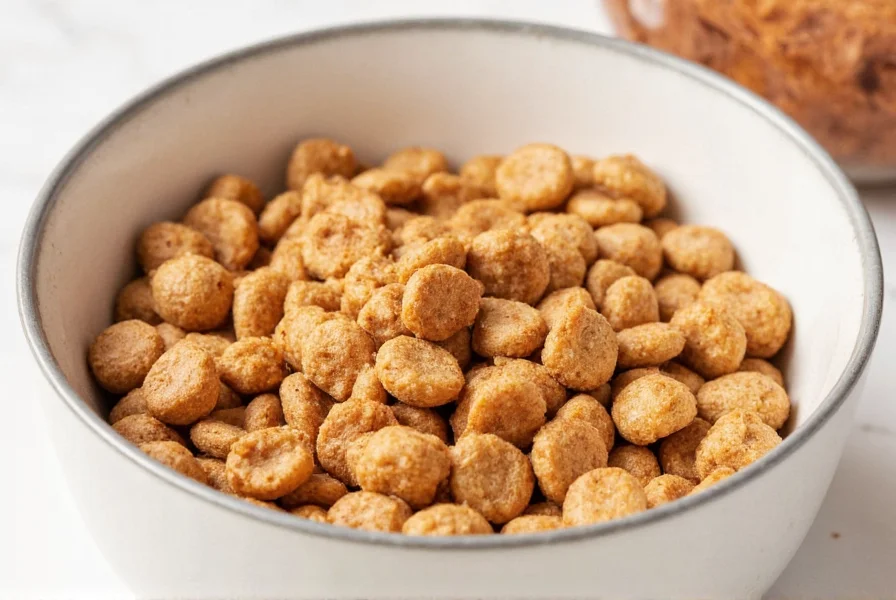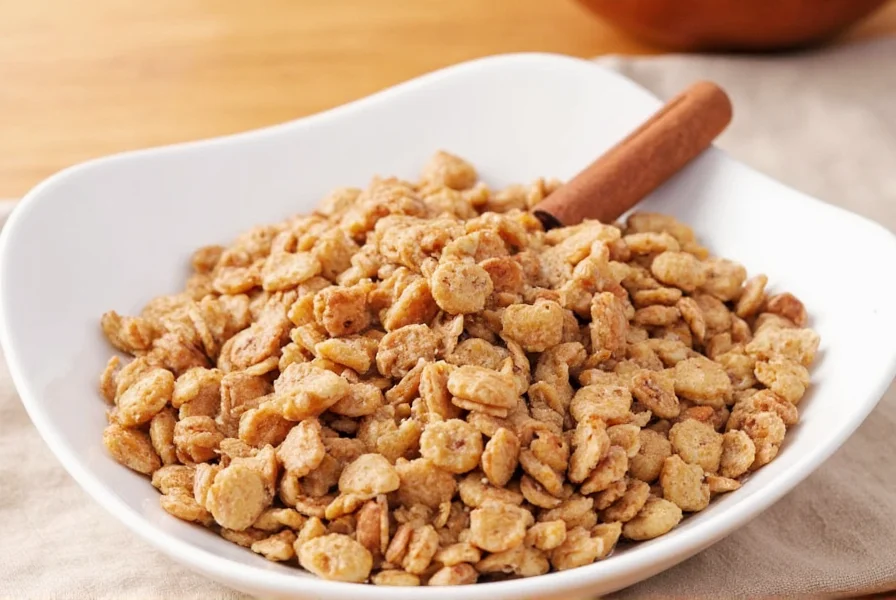Understanding Cinnamon Cereal: More Than Just a Sweet Breakfast
When you pour a bowl of cinnamon cereal, you're experiencing a breakfast tradition that has evolved significantly since its introduction. Unlike plain cereals, cinnamon varieties deliver that distinctive warm spice note that makes mornings more enjoyable. The magic happens through a combination of toasted grains (typically wheat or rice-based) and a cinnamon-sugar coating that creates the signature flavor and crunchy texture.
A Brief History of Cinnamon Cereal
Cinnamon cereal as we know it today emerged in the late 20th century, with Cinnamon Toast Crunch hitting supermarket shelves in 1985. General Mills developed this now-iconic cereal inspired by the flavors of cinnamon toast—a simple childhood treat of buttered toast sprinkled with cinnamon and sugar. The cereal's "crunch" comes from its unique square shape with perforated holes that trap the cinnamon-sugar "crunch" granules.
While commercial cinnamon cereals dominate the market, the concept of adding cinnamon to grain-based breakfasts dates back centuries. Early American settlers often flavored their porridges and gruels with available spices, including cinnamon, which was prized for both flavor and preservation qualities.
Nutritional Profile of Cinnamon Cereal Varieties
Understanding the nutritional differences between commercial and homemade cinnamon cereal options helps make informed choices. The table below compares typical nutritional values per 1-cup (30g) serving:
| Nutrient | Commercial Cinnamon Cereal | Homemade Cinnamon Cereal | Healthier Commercial Option |
|---|---|---|---|
| Calories | 120-140 | 110-130 | 100-120 |
| Total Sugar | 9-12g | 6-8g | 5-7g |
| Fiber | 1g | 2-3g | 3-4g |
| Whole Grains | Limited | 100% whole grain option | 100% whole grain |
| Artificial Ingredients | Common | None | Fewer |
The nutritional gap between traditional cinnamon cereals and healthier alternatives primarily comes down to sugar content and ingredient quality. Most commercial varieties contain 9-12 grams of sugar per serving, while homemade versions can reduce this by 30-40% while increasing fiber content through whole grain choices.

Creating Your Own Homemade Cinnamon Cereal
For those seeking a healthier take on cinnamon cereal without artificial ingredients, homemade versions offer customization and better nutritional control. This basic recipe creates a wholesome alternative that maintains the beloved cinnamon flavor:
Simple Homemade Cinnamon Cereal Recipe
- 4 cups rolled oats or puffed brown rice
- 2 tablespoons coconut oil, melted
- 2 tablespoons pure maple syrup
- 1½ teaspoons ground cinnamon
- ¼ teaspoon sea salt
- 1 teaspoon vanilla extract
- Preheat oven to 300°F (150°C) and line a baking sheet with parchment paper
- Mix all ingredients in a large bowl until evenly coated
- Spread mixture evenly on baking sheet
- Bake for 20-25 minutes, stirring every 7-8 minutes for even toasting
- Cool completely before storing in an airtight container
This recipe yields approximately 4 servings and contains about 6 grams of natural sugar per serving compared to the 9-12 grams in most commercial varieties. You can enhance this basic recipe by adding chopped nuts for extra protein or a sprinkle of nutmeg for additional warmth.
Creative Uses for Cinnamon Cereal Beyond Breakfast
Cinnamon cereal's versatility extends far beyond the breakfast bowl. Consider these creative applications that showcase why this flavor combination remains popular:
- Yogurt topping - Crushed cinnamon cereal adds texture and flavor to plain Greek yogurt
- Baking ingredient - Use as a crunchy topping for apple crisp or bread pudding
- Smoothie booster - Blend a small amount into fruit smoothies for added texture
- Ice cream topping - Provides a sweet crunch that complements vanilla or apple-flavored ice cream
- Trail mix component - Combine with nuts and dried fruit for a portable snack

Storage Tips for Maximum Freshness
Whether you've purchased a box from the store or made your own batch, proper storage maintains that essential crunch. Commercial cinnamon cereals typically stay fresh for 2-3 weeks after opening when stored in an airtight container. For homemade versions, which lack preservatives, consume within 10-14 days for optimal texture.
For extended storage, consider dividing larger batches into smaller portions and freezing what you won't use within two weeks. Thaw at room temperature for 30 minutes before serving to restore the crunch. Avoid storing cinnamon cereal in humid environments, as moisture quickly degrades the texture that makes this breakfast favorite so appealing.
Making Informed Choices About Cinnamon Cereal
When selecting cinnamon cereal, consider your nutritional priorities. For families with children, the familiar taste can encourage breakfast consumption, but examining ingredient lists helps identify options with less added sugar and more whole grains. Reading labels carefully reveals significant differences between brands that may appear similar on the shelf.
For those following specific dietary patterns, cinnamon cereal can often be adapted. Gluten-free versions exist for those with sensitivities, and vegan options are widely available since most cinnamon cereals don't contain animal products (though always verify ingredients).
Frequently Asked Questions
Is cinnamon cereal high in sugar?
Most commercial cinnamon cereals contain 9-12 grams of sugar per 1-cup serving, which represents about 25-30% of the recommended daily added sugar limit for adults. Healthier alternatives and homemade versions can reduce this to 5-8 grams per serving while maintaining flavor.
Can I make cinnamon cereal healthier?
Absolutely. You can enhance the nutritional profile of cinnamon cereal by choosing varieties with whole grains as the first ingredient, making your own version with less sugar and healthy fats, or adding protein sources like nuts or milk. Combining cinnamon cereal with plain yogurt or milk also balances the sugar content with protein.
Why does cinnamon cereal get soggy so quickly?
Cinnamon cereal's sugar coating dissolves rapidly in liquid, causing the characteristic sogginess. The perforated squares in cereals like Cinnamon Toast Crunch have more surface area exposed to milk, accelerating this process. To maintain crunch longer, pour less milk initially or choose cereals with a thicker grain base.
Is there real cinnamon in cinnamon cereal?
Yes, most cinnamon cereals contain real ground cinnamon, though the amount varies by brand. Commercial varieties typically use cassia cinnamon (the more common, less expensive variety) rather than Ceylon cinnamon. The cinnamon content is usually listed in the ingredients as "cinnamon" without specification of type.
How can I replicate Cinnamon Toast Crunch at home?
To create a homemade version similar to Cinnamon Toast Crunch, use whole grain squares (like brown rice cakes cut into small pieces), coat with a mixture of melted coconut oil, maple syrup, cinnamon, and a small amount of cornstarch to mimic the "crunch" granules. Bake until crisp for a healthier alternative with similar flavor profile but less sugar and no artificial ingredients.











 浙公网安备
33010002000092号
浙公网安备
33010002000092号 浙B2-20120091-4
浙B2-20120091-4